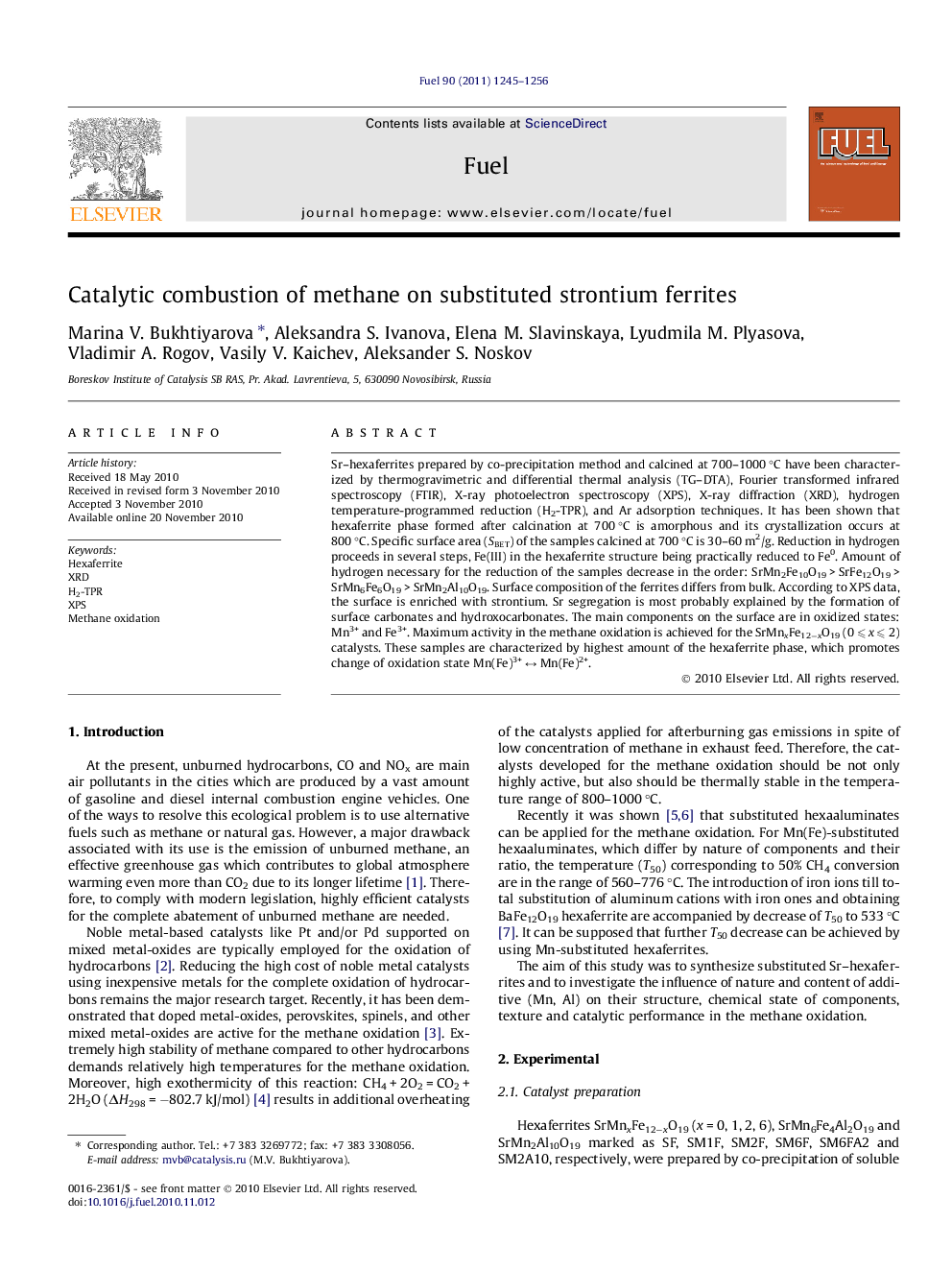| Article ID | Journal | Published Year | Pages | File Type |
|---|---|---|---|---|
| 10272710 | Fuel | 2011 | 12 Pages |
Abstract
Sr-hexaferrites prepared by co-precipitation method and calcined at 700-1000 °С have been characterized by thermogravimetric and differential thermal analysis (TG-DTA), Fourier transformed infrared spectroscopy (FTIR), X-ray photoelectron spectroscopy (XPS), X-ray diffraction (XRD), hydrogen temperature-programmed reduction (H2-TPR), and Ar adsorption techniques. It has been shown that hexaferrite phase formed after calcination at 700 °С is amorphous and its crystallization occurs at 800 °С. Specific surface area (SBET) of the samples calcined at 700 °С is 30-60 m2/g. Reduction in hydrogen proceeds in several steps, Fe(III) in the hexaferrite structure being practically reduced to Fe0. Amount of hydrogen necessary for the reduction of the samples decrease in the order: SrMn2Fe10O19 > SrFe12O19 > SrMn6Fe6O19 > SrMn2Al10O19. Surface composition of the ferrites differs from bulk. According to XPS data, the surface is enriched with strontium. Sr segregation is most probably explained by the formation of surface carbonates and hydroxocarbonates. The main components on the surface are in oxidized states: Mn3+ and Fe3+. Maximum activity in the methane oxidation is achieved for the SrMnxFe12âxO19 (0 ⩽ x ⩽ 2) catalysts. These samples are characterized by highest amount of the hexaferrite phase, which promotes change of oxidation state Mn(Fe)3+ â Mn(Fe)2+.
Related Topics
Physical Sciences and Engineering
Chemical Engineering
Chemical Engineering (General)
Authors
Marina V. Bukhtiyarova, Aleksandra S. Ivanova, Elena M. Slavinskaya, Lyudmila M. Plyasova, Vladimir A. Rogov, Vasily V. Kaichev, Aleksander S. Noskov,
